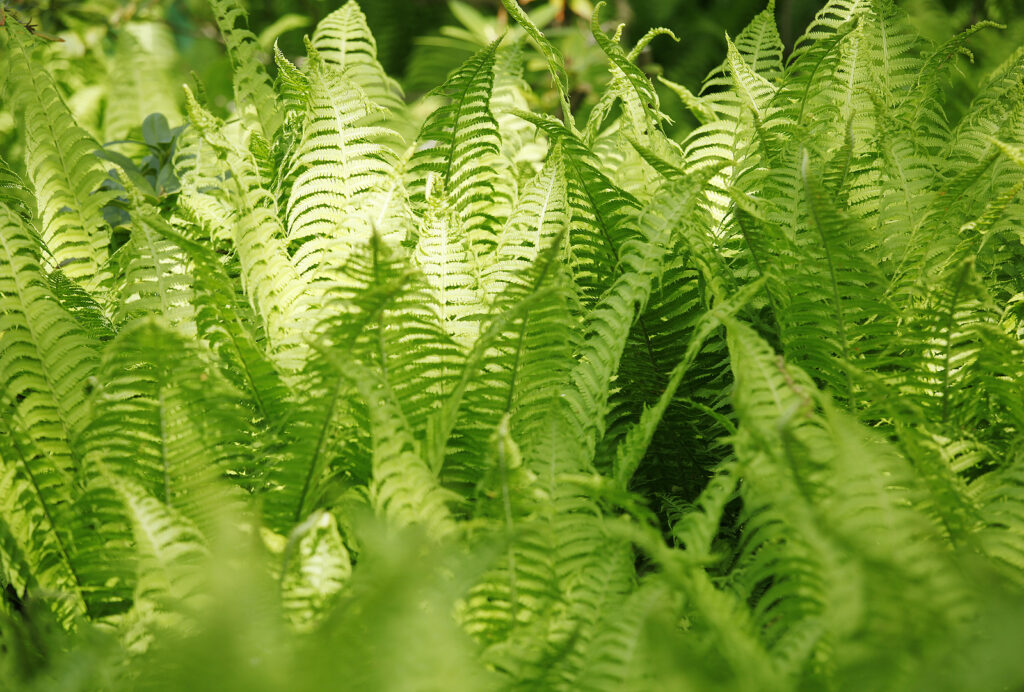Onoclea–commonly called sensitive fern–is a deciduous fern with coarse, thin fronds from 2 to 4 feet long. Onoclea is at home in damp soil–marshes, ditches, and swamps. It is cultivated in gardens in shady damp spots or near water.
Onoclea produces upright then arching, broadly lance-shaped fronds. It is commonly found in spreading colonies. In spring, red croisers or new growth unfurl into large sterile fronds. Narrow fertile fronds appear in late summer. The underground stem spreads rapidly to form extensive mats.
Onoclea is commonly called “sensitive fern” because it is one of the first ferns to die back in autumn when frost comes.
Onoclea is a genus of one species of deciduous, terrestrial fern found in damp sites in East Asia and Eastern North America.
Get to know Onoclea
- Plant type: Fern
- Growing zones and range: Zones 4-9
- Hardiness: Will not survive frost (thus its common name “sensitive fern”)
- Height and width: 2 to 4 feet (.6-1.2m) tall and wide
- Foliage: Coarse, thin fronds
- Uses: Shade or woodland garden, groundcover
- Common name: Sensitive fern
- Botanical name: Onoclea
- Family name: Dryopteridaceae
- Origin: Eastern Asia and Eastern North America
Where to plant Onoclea
- Grow Onoclea in a sheltered site, in moist, humus-rich, preferably acidic soil.
- Best soil is a mixture of 1 part garden loam, 1 part builder’s sand, and 2 parts leaf mold or peat moss.
- Onoclea thrives in wet, boggy soil,
- Plant Onoclea in dappled shade; the fronds will scorch if exposed to too much sun.

When to plant Onoclea
- Set container-grown Onoclea in the garden in sprinbg.
Planting and spacing Onoclea
- Space Onclea 2 to 4 feet (.6-1.2m) apart.
How to water and feed Onoclea
- Water Onoclea freely; it grows best in damp soil.
- Fertilize Onoclea with a nitrogen-rich, all-purpose fertilizer.
Onoclea care
- Onoclea’s creeping rhizomes can spread; use a barrier if you want to halt its progression.
Onoclea pests and diseases
- Onoclea is prone to rust.
Onoclea propagation
- Sow spores at 60°F (16°C) as soon as ripe.
- Divide existing plants in spring; the root system can be cut into sections and replanted..
Onoclea varieties to grow
- Onoclea sensibilis, sensitive fern. Deciduous, upright fern with arching, broadly lance-shaped pale green fronds to 18 inches long; emerging fronds are sometimes pinkish bronze in spring; grows to 24 inches tall and wide.



